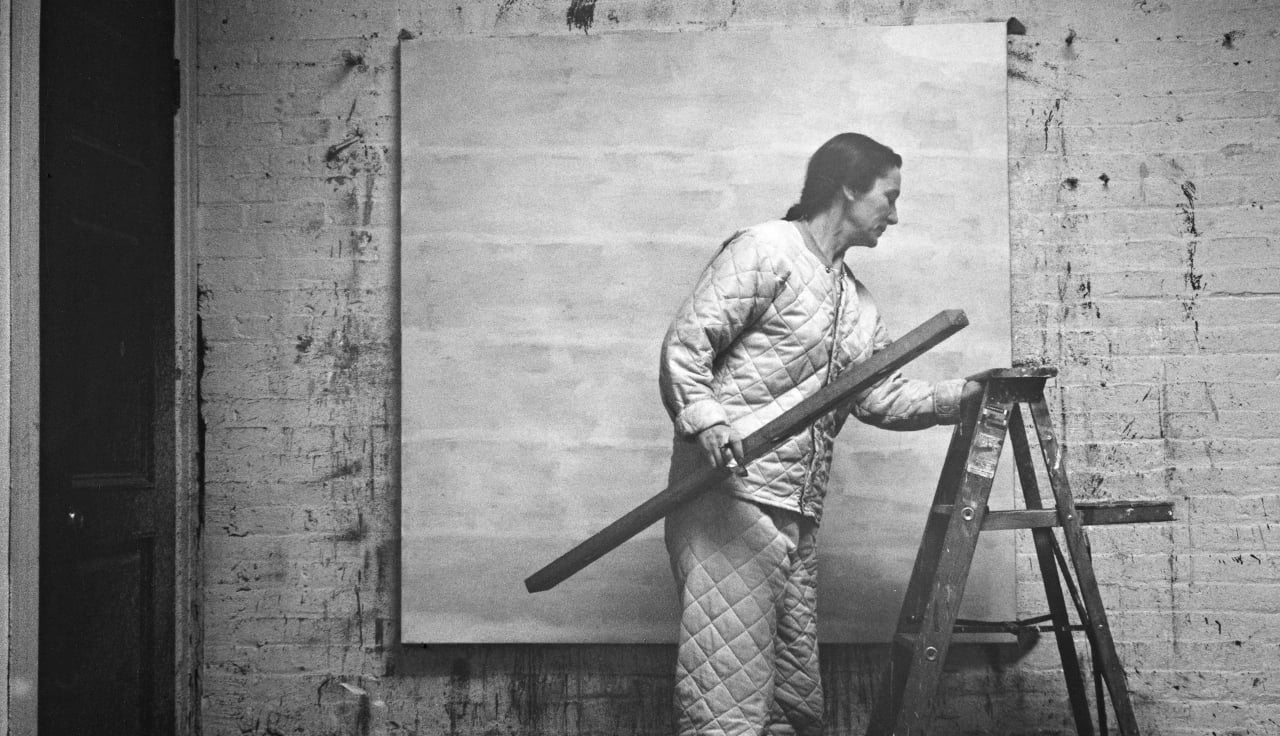
That exhalation you just heard is the sound of art authentication boards and catalogue raisonné authors across the country breathing a sigh of relief.
In what is being heralded as a victory for scholars, a New York State Supreme Court judge has dismissed London dealer James Mayor’s claims against Pace Gallery president Arne Glimcher and the Agnes Martin catalogue raisonné committee for excluding 13 works from the artist’s catalogue raisonné, a decision he says cost him $7.2 million. In an unusual step, the judge also awarded the gallery and committee members the full cost of their legal fees, an amount in the hundreds of thousands of dollars for which Mayor Gallery is now liable.
Mel Leventhal, the attorney for Mayor Gallery, told artnet News via email: “We of course respectfully disagree with this opinion and judgment which prevents a full hearing on the issues and claims. There are a number of options available to the Mayor Gallery and we are still confident that ultimately our claims will receive a full hearing and be upheld.”
The case has been monitored with keen interest by those in the art trade. In recent years, artist foundations have become increasingly wary of offering opinions regarding a work’s authenticity for fear of being sued. Although such cases are almost always decided in favor of the scholar or foundation, the cost of defending them has led many foundations—including those of Andy Warhol, Jean-Michel Basquiat, and Keith Haring—to disband their authentication committees entirely.
When Mayor Gallery filed its lawsuit in 2016, many saw it as a sign that catalogues raisonnés—a scholarly publication that compiles all the known works by an artist—would become the next battleground for collectors unhappy with current authentication practices and experts’ opinions on the authenticity of their works.
“Authentication committees generally are very, very gun shy,” attorney Aaron Richard Golub, who represented Glimcher and the committee members, told artnet News. “This is a big movement on the road to validating authentication committees and what they do. They should be left alone to decide these things.”
The recent case hinged on 13 works that passed through Mayor Gallery between 2009 and 2015. They range in price from $2.9 million for a work titled Day and Night (1964), sold to the collector Jack Levy in 2010, to a work on paper bought by collector Sybil Shainwald in 2012 for $180,000. All 13 works were rejected by the Agnes Martin Catalogue Raisonné LLC authentication committee. Without inclusion in the catalogue, no reputable auction house or gallery would likely sell the works.
Agnes Martin. Photo: © Chris Felver.
According to Mayor Gallery, the committee provided no explanation for its decisions, and he was left holding the bag. James Mayor refunded, or offered to refund, the four clients who bought the rejected works for a total of $7.2 million. (One collector, Pierre de Labouchere, said he would wait for the case to be resolved before seeking a refund.)
Although the committee in charge of Agnes Martin’s catalogue raisonné required petitioners to sign a contract pledging not to take legal action if they didn’t agree with a decision, Mayor Gallery took the novel tack of suing over “product disparagement.” The gallery argued that the works it sold had been unfairly devalued due to their exclusion.
Mayor sued Glimcher, the managing member of the committee, the director of the Agnes Martin Foundation, and the owner of Pace Gallery, which represents the Martin estate. The London gallery also sued the committee’s six anonymous committee members individually as well as Tiffany Bell, the catalogue’s editor.
In the lawsuit, Mayor claimed that Martin’s catalogue raisonné—which exists online and is updated on an ongoing basis—was potentially compromised because it was led by Glimcher, who also has a financial stake in Martin’s market. The gallery also cited “longstanding frictions and disagreements” between James Mayor and Glimcher that may have motivated the decisions.
In her ruling, Judge Andrea Masley said that Mayor did not manage to prove that the committee’s decision was the result of “malice.” Furthermore, she added, the committee was not required to provide an explanation for why it rejected the works. The committee “is not required to turn over any information other than its decision to accept or decline to include the submitted work by letter, and does not have to grant any person an opportunity to rebut its decision,” she wrote.
Attorney and art law expert Tom Danziger told artnet News: “It’s very unusual in a litigation of this kind for a defendant to be awarded legal fees.”
Golub hopes the ruling will set a new precedent and shield credentialed experts from having to defend themselves against bad-faith lawsuits in the future. Notably, several lawyers have been campaigning for years—but with little success—to revise New York’s state law so that successful defendants in art authentication-related lawsuits would always be awarded legal fees.
“This is an important victory for authenticators, artist foundations, and catalogue raisonné authors,” Dean Nicyper, an attorney with Withers Bergman and one of several who support the bill, told artnet News. Although he is hopeful that the New York state legislature will pass the bill this year, he said that “regardless, this court’s decision should embolden authenticators to continue doing good work.”